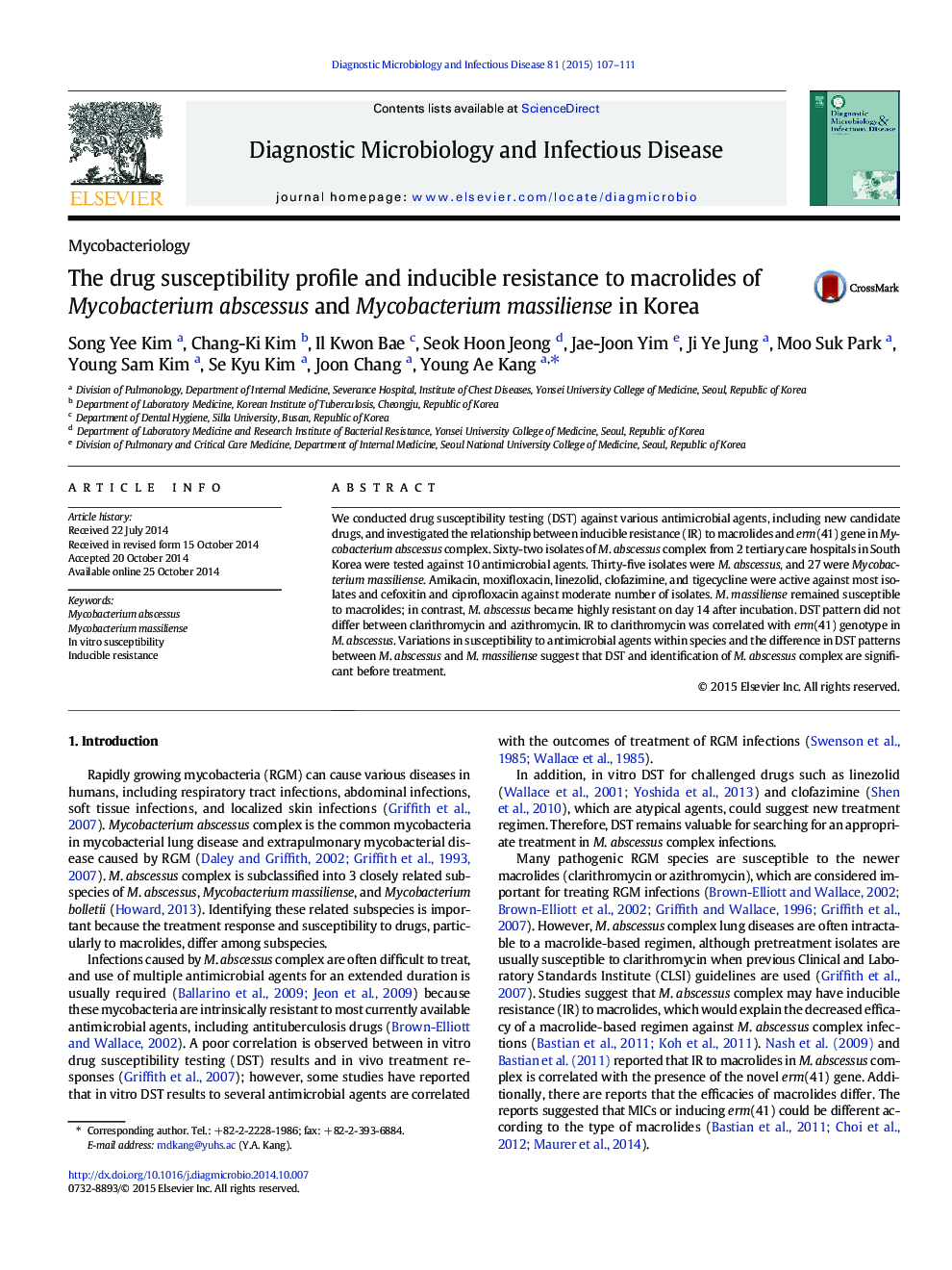| Article ID | Journal | Published Year | Pages | File Type |
|---|---|---|---|---|
| 3346907 | Diagnostic Microbiology and Infectious Disease | 2015 | 5 Pages |
•We performed in vitro DST in 62 isolates of M. abscessus complex (35 M. abscessus and 27 M. massiliense).•Amikacin, moxifloxacin, linezolid, clofazimine, and tigecycline were active against most isolates.•M. massiliense remained susceptible to macrolides, but M. abscessus became highly resistant on day 14 after incubation.•DST pattern did not differ between clarithromycin and azithromycin in M. abscessus complex.•Inducible resistance to clarithromycin was correlated with erm(41) genotype in M. abscessus.
We conducted drug susceptibility testing (DST) against various antimicrobial agents, including new candidate drugs, and investigated the relationship between inducible resistance (IR) to macrolides and erm(41) gene in Mycobacterium abscessus complex. Sixty-two isolates of M. abscessus complex from 2 tertiary care hospitals in South Korea were tested against 10 antimicrobial agents. Thirty-five isolates were M. abscessus, and 27 were Mycobacterium massiliense. Amikacin, moxifloxacin, linezolid, clofazimine, and tigecycline were active against most isolates and cefoxitin and ciprofloxacin against moderate number of isolates. M. massiliense remained susceptible to macrolides; in contrast, M. abscessus became highly resistant on day 14 after incubation. DST pattern did not differ between clarithromycin and azithromycin. IR to clarithromycin was correlated with erm(41) genotype in M. abscessus. Variations in susceptibility to antimicrobial agents within species and the difference in DST patterns between M. abscessus and M. massiliense suggest that DST and identification of M. abscessus complex are significant before treatment.
